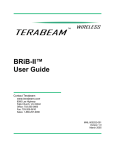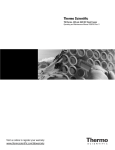Download x - American Instrument Exchange, Inc.
Transcript
Model 8600 Series -86C Ultra Low Temperature Freezer Operating and Maintenance Manual 7038602 Rev. 5 Preface Important installer and user information: A redundant temperature sensing device has been included in this ULT freezer. This device is a type “T” thermocouple. For convenient access, the thermocouple (Figure 1-3) terminates in an interconnect jack (Figure 1-5) behind the base front cover. (May be located differently in chests. See Section 1.) It is strongly recommended that this thermocouple be attached to a redundant 24 hour 7 day monitoring system with alarm capabilities. Connecting the sensor to a monitoring and alarm system separate from the freezer provides the utmost in product safety, should the integral system fail. s Model Capacity in Cubic Feet Voltage 8602 13 230 8603 13 120 8604 17 120 8605 17 230 8606 23 230 8607 28 230 8656 23 120 8690 23 120 8691 13 230 8692 13 120 8693 17 120 8694 17 230 8695 23 230 Double Door Units MANUAL NUMBER 7038602 5 25693/FR-2080 7/29/09 Chg’d drier from 209016 to 209017 (refrig schematics), -205 drawing ccs 4 25283/IN-10127 5/27/09 Updated 8602-200-1-B exploded parts drawing - 28 cu ft door change ccs 3 25411/FR-2040 4/30/09 Changed drier from 209020 to 209016 (refrigeration schematics) ccs 2 25018/FR-2016 10/29/08 Removed reference to VRP tool ccs 1 24567/FR-2000,24605/ 5/22/08 Clarified chamber probe and thermocouple callouts, Important info above, ccs FR-2000, 24417/SI-9962 24191 updated exploded parts drawings (-203) to current production (color chg), software updated, ‘Test BUS Operation’ and Micro Board Failure Error, 8627 red cell deleted 0 23831/FR-1943 6/15/07 REV ECR/ECN DATE Thermo Scientific ccs Release 4 heat exchanger ccs DESCRIPTION By Model 8600 Series i Preface Important Read this instruction manual. Failure to read, understand and follow the instructions in this manual may result in damage to the unit, injury to operating personnel, and poor equipment performance. s Caution All internal adjustments and maintenance must be performed by qualified service personnel. s Material in this manual is for information purposes only. The contents and the product it describes are subject to change without notice. Thermo Scientific makes no representations or warranties with respect to this manual. In no event shall Thermo be held liable for any damages, direct or incidental, arising out of or related to the use of this manual. ©2007 Thermo Scientific. All rights reserved. ii Model 8600 Series Thermo Scientific Preface Important operating and/or maintenance instructions. Read the accompanying text carefully. Potential electrical hazards. Only qualified persons should perform procedures associated with this symbol. Equipment being maintained or serviced must be turned off and locked off to prevent possible injury. Hot surface(s) present which may cause burns to unprotected skin, or to materials which may be damaged by elevated temperatures. Marking of electrical and electronic equipment, which applies to electrical and electronic equipment falling under the Directive 2002/96/EC (WEEE) and the equipment that has been put on the market after 13 August 2005. This product is required to comply with the European Union’s Waste Electrical & Electronic Equipment (WEEE) Directive 2002/96/EC. It is marked with the WEEE symbol. Thermo Scientific has contracted with one or more recycling/disposal companies in each EU Member State European Country, and this product should be disposed of or recycled through them. Further information on Thermo’s compliance with this directive, the recyclers in your country and information on Thermo products will be available at www.thermo.com. 4 Always use the proper protective equipment (clothing, gloves, goggles, etc.) 4 Always dissipate extreme cold or heat and wear protective clothing. 4 Always follow good hygiene practices. 4 Each individual is responsible for his or her own safety. Thermo Scientific Model 8600 Series iii Preface Do You Need Information or Assistance on Thermo Scientific Products? If you do, please contact us 8:00 a.m. to 6:00 p.m. (Eastern Time) at: 1-740-373-4763 1-866-984-3766 1-740-373-4189 http://www.thermo.com [email protected] Direct Toll Free, U.S. and Canada FAX Internet Worldwide Web Home Page Service E-Mail Address Our Sales Support staff can provide information on pricing and give you quotations. We can take your order and provide delivery information on major equipment items or make arrangements to have your local sales representative contact you. Our products are listed on the Internet and we can be contacted through our Internet home page. Our Service Support staff can supply technical information about proper setup, operation or troubleshooting of your equipment. We can fill your needs for spare or replacement parts or provide you with on-site service. We can also provide you with a quotation on our Extended Warranty for your Thermo Scientific products. Whatever Thermo Scientific products you need or use, we will be happy to discuss your applications. If you are experiencing technical problems, working together, we will help you locate the problem and, chances are, correct it yourself...over the telephone without a service call. When more extensive service is necessary, we will assist you with direct factory trained technicians or a qualified service organization for on-the-spot repair. If your service need is covered by the warranty, we will arrange for the unit to be repaired at our expense and to your satisfaction. Regardless of your needs, our professional telephone technicians are available to assist you Monday through Friday from 8:00 a.m. to 6:00 p.m. Eastern Time. Please contact us by telephone or fax. If you wish to write, our mailing address is: Thermo Scientific Controlled Environment Equipment 401 Millcreek Road, Box 649 Marietta, OH 45750 International customers, please contact your local Thermo Scientific distributor. iv Model 8600 Series Thermo Scientific Table of Contents Section 1 Thermo Scientific Installation and Start-Up . . . . . . . . . . . . . . . . . . . . . . . . . . . . . . . . . . . . . .1-1 Control Panel Keys, Displays & Indicators . . . . . . . . . . . . . . . . . . . .1-3 Keypad Operation . . . . . . . . . . . . . . . . . . . . . . . . . . . . . . . . . . . . . . .1-4 Displays . . . . . . . . . . . . . . . . . . . . . . . . . . . . . . . . . . . . . . . . . . . . . . .1-5 Install the Freezer . . . . . . . . . . . . . . . . . . . . . . . . . . . . . . . . . . . . . . . .1-5 Choose the Location . . . . . . . . . . . . . . . . . . . . . . . . . . . . . . . . . . . .1-5 Install the Wall Bumpers . . . . . . . . . . . . . . . . . . . . . . . . . . . . . . . . .1-6 Install the Shelves . . . . . . . . . . . . . . . . . . . . . . . . . . . . . . . . . . . . . .1-6 RS-232 Communications . . . . . . . . . . . . . . . . . . . . . . . . . . . . . . . .1-6 Remote Alarm Contacts and Analog Output . . . . . . . . . . . . . . . . .1-7 Attach the Power Cord . . . . . . . . . . . . . . . . . . . . . . . . . . . . . . . . . .1-8 Connect the Unit to Electrical Power . . . . . . . . . . . . . . . . . . . . . . .1-8 Freezer Start-Up . . . . . . . . . . . . . . . . . . . . . . . . . . . . . . . . . . . . . . . . .1-8 Set the Operating Temperature . . . . . . . . . . . . . . . . . . . . . . . . . . . .1-9 Set the High Temperature Alarm . . . . . . . . . . . . . . . . . . . . . . . . . . .1-9 Set the Low Temperature Alarm . . . . . . . . . . . . . . . . . . . . . . . . . .1-10 Access Code . . . . . . . . . . . . . . . . . . . . . . . . . . . . . . . . . . . . . . . . .1-10 Run Mode . . . . . . . . . . . . . . . . . . . . . . . . . . . . . . . . . . . . . . . . . . . .1-10 Section 2 Calibrate . . . . . . . . . . . . . . . . . . . . . . . . . . . . . . . . . . . . . . . . . . . . . . . . . . . .2-1 Calibrate the Control Probe . . . . . . . . . . . . . . . . . . . . . . . . . . . . . . . .2-1 Calibrate the Optional Sample Probe . . . . . . . . . . . . . . . . . . . . . . . . .2-2 Section 3 Configuration . . . . . . . . . . . . . . . . . . . . . . . . . . . . . . . . . . . . . . . . . . . . . . . .3-1 High Alarm Test . . . . . . . . . . . . . . . . . . . . . . . . . . . . . . . . . . . . . . . . .3-1 Low Alarm Test . . . . . . . . . . . . . . . . . . . . . . . . . . . . . . . . . . . . . . . . .3-1 System Battery Test . . . . . . . . . . . . . . . . . . . . . . . . . . . . . . . . . . . . . .3-2 BUS Battery Test . . . . . . . . . . . . . . . . . . . . . . . . . . . . . . . . . . . . . . . .3-2 Display Temperature . . . . . . . . . . . . . . . . . . . . . . . . . . . . . . . . . . . . .3-3 Clear High Stage Alarm . . . . . . . . . . . . . . . . . . . . . . . . . . . . . . . . . . .3-3 Set an Access Code . . . . . . . . . . . . . . . . . . . . . . . . . . . . . . . . . . . . . . .3-4 RS485 Address . . . . . . . . . . . . . . . . . . . . . . . . . . . . . . . . . . . . . . . . . .3-4 Back-Up System Type . . . . . . . . . . . . . . . . . . . . . . . . . . . . . . . . . . . .3-5 Model 8600 Series v Table of Contents vi Model 8600 Series Section 4 Alarms . . . . . . . . . . . . . . . . . . . . . . . . . . . . . . . . . . . . . . . . . . . . . . . . . . . . . .4-1 Wrong Power Alarm . . . . . . . . . . . . . . . . . . . . . . . . . . . . . . . . . . . . . .4-2 High Stage System Failure Alarm . . . . . . . . . . . . . . . . . . . . . . . . . . . .4-2 Voltage Compensation Alarm . . . . . . . . . . . . . . . . . . . . . . . . . . . . . . .4-2 Multiple Alarms . . . . . . . . . . . . . . . . . . . . . . . . . . . . . . . . . . . . . . . . .4-2 Micro Board Failure Alarm . . . . . . . . . . . . . . . . . . . . . . . . . . . . . . . .4-2 Communication Loss . . . . . . . . . . . . . . . . . . . . . . . . . . . . . . . . . . . . .4-3 Probe Failure Alarms . . . . . . . . . . . . . . . . . . . . . . . . . . . . . . . . . . . . .4-3 Section 5 Maintenance . . . . . . . . . . . . . . . . . . . . . . . . . . . . . . . . . . . . . . . . . . . . . . . .5-1 Clean Cabinet Exterior . . . . . . . . . . . . . . . . . . . . . . . . . . . . . . . . . . .5-1 Clean Air Filter . . . . . . . . . . . . . . . . . . . . . . . . . . . . . . . . . . . . . . . . .5-1 Clean the Condenser . . . . . . . . . . . . . . . . . . . . . . . . . . . . . . . . . . . . .5-1 Clean the Water-cooled Condenser . . . . . . . . . . . . . . . . . . . . . . . . .5-2 Defrost the Chamber . . . . . . . . . . . . . . . . . . . . . . . . . . . . . . . . . . . . .5-3 Clean the Door Gasket . . . . . . . . . . . . . . . . . . . . . . . . . . . . . . . . . . .5-3 Vacuum Relief Port . . . . . . . . . . . . . . . . . . . . . . . . . . . . . . . . . . . . . .5-4 Replace the Battery(s) . . . . . . . . . . . . . . . . . . . . . . . . . . . . . . . . . . . . .5-4 Prepare the Unit for Storage . . . . . . . . . . . . . . . . . . . . . . . . . . . . . . . .5-6 Preventive Maintenance . . . . . . . . . . . . . . . . . . . . . . . . . . . . . . . . . .5-7 Section 6 Factory Installed Options . . . . . . . . . . . . . . . . . . . . . . . . . . . . . . . . . . . . . .6-1 BUS-Back-Up System . . . . . . . . . . . . . . . . . . . . . . . . . . . . . . . . . . . .6-1 Install Injection Assembly, Vent Stack and Solenoid . . . . . . . . . . . .6-1 Install the Temperature Probe . . . . . . . . . . . . . . . . . . . . . . . . . . . . .6-3 Connect the Probe/Solenoid Harness . . . . . . . . . . . . . . . . . . . . . . .6-4 BUS Control Panel . . . . . . . . . . . . . . . . . . . . . . . . . . . . . . . . . . . . .6-5 Set the Optional BUS Set Point . . . . . . . . . . . . . . . . . . . . . . . . . . .6-6 Test the BUS . . . . . . . . . . . . . . . . . . . . . . . . . . . . . . . . . . . . . . . . . .6-6 Clean the Vent Stack . . . . . . . . . . . . . . . . . . . . . . . . . . . . . . . . . . . .6-6 Disconnect the Fitting Assembly & Transfer Hose . . . . . . . . . . . . .6-7 Chart Recorder . . . . . . . . . . . . . . . . . . . . . . . . . . . . . . . . . . . . . . . . . .6-7 Install the Chart Paper . . . . . . . . . . . . . . . . . . . . . . . . . . . . . . . . . .6-7 Change Recorder Temperature Range . . . . . . . . . . . . . . . . . . . . . . .6-8 Calibrate the Chart Recorder . . . . . . . . . . . . . . . . . . . . . . . . . . . . .6-8 Datalogger . . . . . . . . . . . . . . . . . . . . . . . . . . . . . . . . . . . . . . . . . . . . .6-9 Water-cooled Condenser . . . . . . . . . . . . . . . . . . . . . . . . . . . . . . . . . .6-9 Five Inner Door Option . . . . . . . . . . . . . . . . . . . . . . . . . . . . . . . . . . .6-9 Section 7 Section 8 Section 9 Section 10 Specifications . . . . . . . . . . . . . . . . . . . . . . . . . . . . . . . . . . . . . . . . . . . . . . .7-1 Exploded Parts Drawings . . . . . . . . . . . . . . . . . . . . . . . . . . . . . . . . . . . . .8-1 Refrigeration Schematics . . . . . . . . . . . . . . . . . . . . . . . . . . . . . . . . . . . . .9-1 Electrical Schematics . . . . . . . . . . . . . . . . . . . . . . . . . . . . . . . . . . . . . . .10-1 Appendix Thermo Scientific Section 1 Installation and Start-Up Control Panel Optional Back Up System Controls Temperature Recorder (Optional) Documentation Compartment Figure 1-1. Front View • • • • Control Panel - keypad, displays and indicators. BUS (Optional Back Up System) panel. Optional temperature recorder - 7 day, one pen or datalogger. Documentation compartment - storage of user’s manual and other documentation. Wall Bumper (pre-tapped holes) Optional Back-up System Connections RS-232 or RS-485 Interface Remote Alarm Contacts and Analog Output Power Switch (mains disconnect) Power Inlet Figure 1-2. Rear View • Remote alarm contacts and selectable analog output connection - 0-1V, 4-20mA (default), 0-5V. • Power inlet for power cord connection. • Optional BUS connections for probe and solenoid. • RS-232 (default) or RS-485 interface. • Power Switch (mains disconnect). Thermo Scientific Model 8600 Series 1-1 Section 1 Installation and Start-Up Optional Miscellaneous Accessories Probe Optional - Recorder Probe/Datalogger Probe Sealant (Caution: This is a critical seal. Seal must be maintained.) Control RTD/Redundant Type T Thermocouple Probe Figure 1-3. Chamber Probe Figures 1-3 & 1-4 • Vacuum relief port - pressure equalization port • Probe cover houses control, optional recorder, datalogger or 1535 alarm probes Vacuum Relief Port Chamber Probe Cover Figure 1-4. Vacuum Relief and Probe Cover Location Figure 1-5 • Battery mounting bracket(s) • Battery power switch (freezer and BUS) • Freezer battery • Optional BUS battery • Freezer filter location Thermocouple interconnect jack Battery power switch To remove filter Battery mounting bracket Freezer battery and optional BUS battery Figure 1-5. Battery(s) Location and Switch 1-2 Model 8600 Series Thermo Scientific Section 1 Installation and Start-Up Control Panel Keys, Displays & Indicators Silence Temp Display Mode Visual Alarm Indicator Low Battery Indicator Hot Condenser Indicator SYSTEM OK Message Center Scroll for Parameters Arrows Enter Up and Down Arrows Figure 1-6. Control Panel Mode Select Switch - Used to select Run, Settings, Calibrate and System Configuration Modes. Mode Select Indicators Run: Run Menu Settings: Set Points Menu Calibrate: Calibrate Menu Configuration: Configuration Menu Temperature Display - Displays temperature in degrees Celsius. Alarm Indicator - Light pulses on/off during a cabinet alarm condition. Silence - Silences the audible alarm. Low Battery - indicates a low battery condition of the freezer battery. Hot Condenser - indicates a hot condenser condition. Message Center - displays system status and alarms. Scroll for Parameters Arrows - moves the operator through the choices of the selected mode. Up and Down Arrows - Increases or decreases values, toggles between choices. Enter - Stores the value into computer memory. Thermo Scientific Model 8600 Series 1-3 Section 1 Installation and Start-Up Keypad Operation Model 8600 Series freezer has four basic modes which allow freezer setup: Run, Settings, Calibrate and Configuration. Run is the default mode for the freezer during normal operation. Settings is used to enter system set points for freezer operation. Calibrate is used to calibrate various system parameters. Configuration allows for custom setup of various options. The chart below shows the selections under each of the modes. Run Settings Calibrate Configuration Default Mode System Ok Control Set Point Control Probe High Alarm Test Line Voltage High Alarm Set Point Optional Sample Probe Low Alarm Test Compensated Voltage Low Alarm Set Point System Battery Test HSHX Temperature Optional Back Up System Set Point BUS Battery Test Display Temperature Clear High Stage Alarm Set Access Code RS485 Address BUS type CO2 or LN2 Scroll for Parameters Arrows: Steps the operator through the parameters of SETTINGS, CALIBRATE and CONFIGURATION Modes. The right arrow goes to the next parameter, the left arrow returns to the previous parameter. Up Arrow: Increases or toggles the parameter value that has been selected in the SETTINGS, CALIBRATE, and CONFIGURATION Modes. Enter: Must press Enter key to save to memory all changed values. Down Arrow: Decreases or toggles the parameter values that have been selected in the SETTINGS, CALIBRATE and CONFIGURATION Modes. Silence Key: Press to silence the audible alarm. See Section 4 for alarm ringback times. 1-4 Model 8600 Series Thermo Scientific Section 1 Installation and Start-Up Displays Install the Freezer Message Center: Displays the system status (Mode) at all times. Displays SYSTEM OK during normal operation, or alarm messages if the system detects an alarm condition. See Section 4 - Alarms. Caution If tipped more than 45°, allow the unit to set upright for 24 hours before start up. s To remove the freezer from the pallet, use the 7/16" wrench to remove all the bolts securing the shipping bracket to the pallet. Remove the shipping bracket. Remove the ramp boards from the pallet and place the slotted end over the ramp brackets on the pallet. The support blocks on the ramps will be facing down. Before moving the freezer, make sure the casters are unlocked and moving freely. Align the caster with the ramp boards. Use adequate personnel to roll the freezer off the pallet. The freezer can be easily pushed to the desired approved location, described in the following section. If necessary, the doors and lower front panel may be opened to move the unit through tight openings. When the freezer is in position, set the front caster brakes. Caution The freezer must not be moved with the product load inside. s Choose the Location Locate the freezer on a firm, level surface in an area with an ambient temperature between 18°C and 32°C. Provide ample room to reach the mains disconnect switch (power switch) located on the rear of the freezer. Caution For proper ventilation and airflow, a minimum clearance of 5” at the rear and top and a clearance of 8” on the side of the freezer is required. Allow adequate space in the front of the freezer for door opening. s Thermo Scientific Model 8600 Series 1-5 Section 1 Installation and Start-Up Install the Wall Bumpers The parts bag, located inside the cabinet, contains the following parts. Qty Stock # Description Purpose 2 510016 1/4-20 x 5-1/2” Bolt Wall Bumper 2 380520 Neoprene Cap Cap Protector Install the bolts into the pre-tapped holes on the back of the compressor section. Install a neoprene cap on each bolt. Refer to Figure 1-2 for the locations of the pre-tapped holes. Install the Shelves Install the shelf clips into the shelf pilasters (front and back) at the desired shelf level. Install the shelves in the cabinet onto the clips. Note On units having the optional 5 inner door option, refer to the instructions accompanying the inner door kit. s RS-232 Communications The Model 8600 Series freezer has a data communications interface. The factory default setting is RS-232. The wiring identification for the interface is shown in Figure 1-7. One nine pin, sub "D" style connector is located on the back of the freezer. See Figure 1-2 for the location of the connector on the freezer. Figure 1-7. Wiring The freezer transmits temperature information every 60 minutes. A standard DB9 serial extension cable can be used to connect the freezer to serial device. Some serial devices may require a null modem adapter. Data format: Baud . . . . . . . . . . . . . . . . . . . . . . . . . . . . . . . .1200 Data bits . . . . . .8 (7 bit ASCII with leading zero) Start bits . . . . . . . . . . . . . . . . . . . . . . . . . . . . . . . .1 Stop bits . . . . . . . . . . . . . . . . . . . . . . . . . . . . . . . .2 Parity . . . . . . . . . . . . . . . . . . . . . . . . . . . . . . . .none 1-6 Model 8600 Series Thermo Scientific Section 1 Installation and Start-Up RS-232 Communications (continued) The data transfer sequence is transmitted in the following format. X refers to numerical temperature data. (NUL) (-) XXX (SP) C (SP) (OVERTEMP) (SP) (LF) (CR) (EOT) (SP) (UNDER TEMP) The words "OVER TEMP" or "UNDER TEMP" are transmitted when an alarm condition exists along with the temperature. If no alarm condition exists, spaces will be sent. A total of 20 characters will be sent. SP - Space CR - Carriage return NUL - Null character (00) LF - Line feed EOT - End of text (4) Note The RS-232 is not compatible with Model 1535 Monitor/Alarm System. s Remote Alarm Contacts and Analog Output Model 8600 Series freezer has remote alarm contacts and analog output. See Figure 1-2 for the location of the remote alarm contacts. The remote alarm connector is shipped in the parts bag provided with the manual. It must be installed if connecting the freezer to an alarm system. After installing the wiring from the alarm system to the connector, install the connector to the freezer microboard and secure with the two screws provided. The remote alarm provides a NO (normally open) output, a NC (normally closed) output and COM (common). The contacts will trip on a power outage, high temperature alarm or low temperature alarm. Figure 1-8 shows the remote contacts in alarm state. The analog output function allows the freezer to output signals representing the temperature of the freezer cabinet. The factory default setting is 4-20 mA. Refer to Figure 1-9 for output specifications. Temperature 4-20 mA -100 to +50°C Figure 1-8. Remote Contacts in Alarm 0-1V -100 to +50°C 0-5V -100 to +50°C Figure 1-9. Output Specifications IMPORTANT USER INFORMATION Caution! Stored product should be protected by a redundant 24 hour/day monitoring system with alarm capability. An interconnect jack and thermocouple are installed for centralized monitoring, should on-board system fail. Thermo Scientific Model 8600 Series 1-7 Section 1 Installation and Start-Up Attach the Power Cord Insert the power cord into the power inlet module. Place the retaining bracket (P/N 195763) over the connector. Tighten retaining screws to secure. Figure 1-10. Secure Power Cord Connect the Unit to Electrical Power Caution See the serial tag on the side of the unit for electrical specifications or refer to the electrical schematics in this manual. s The freezer should be operated on a dedicated grounded service. Check the voltage rating on the serial tag of the unit and compare it with the outlet voltage. Then, with the power switch turned off, plug the line cord into the wall outlet. First, turn on the freezer power switch. Then open the lower front door by grasping the bottom left corner. Locate the battery switch (Figure 1-5) and turn it to Standby mode ( ). During initial freezer start-up, the system battery may require charging and the Low Battery indicator may illuminate. Caution Ensure the battery switch is turned to Standby mode ( ). The rechargeable batteries require 36 hours to charge at initial start-up. A “Low Battery” alarm may occur until the batteries are fully charged. Should a power failure occur during the initial start-up period, the electronics will have limited operation. s Freezer Start-Up With the freezer properly installed and Table 1-1. Default Settings connected to power, system set points can Control Set Point be entered. The following set points can be entered in Settings mode: Control High Temperature Alarm temperature, high temperature alarm set Low temperature alarm point, low temperature alarm set point, and (optional) BUS set point. Default Optional BUS Set Point settings are shown in Table 1. -80°C -70°C -90°C -60°C Caution If the set point is changed and the low temperature and high temperature alarms are set 10° from the set point, the alarm set points will adjust automatically to maintain a distance of at least 10° from set point. s 1-8 Model 8600 Series Thermo Scientific Section 1 Installation and Start-Up Set the Operating Temperature All Model 8600 Series freezers have an operating temperature range of -50°C to -86°C, depending on ambient temperature. The freezer is shipped from the factory with a temperature set point of -80°C. To change the operating temperature set point: 1. Press the Mode key until the Settings indicator lights. 2. Press the right arrow until “SET PT = -XX” is displayed in the message center. 3. Press the up/down arrow key until the desired temperature set point is displayed. 4. Press Enter to save the set point. 5. Press the Mode key until the Run indicator lights for Run mode or press the right/left arrow keys to go to next/previous parameter. If no control keys are pressed, the freezer will automatically return to RUN mode after 5 minutes. Set the High Temperature Alarm The high temperature alarm will activate an audible/visual warning when the freezer chamber temperature has reached or exceeded the high temperature alarm set point. To set the high temperature alarm set point: 1. Press the Mode key until the Set indicator lights. 2. Press the right arrow until “HI ALM = -XX” is displayed in the message center. 3. Press the up or down arrow key until the desired high temperature alarm set point is displayed. 4. Press Enter to save the setting. 5. Press the Mode key until the Run indicator lights or press the right or left arrow to go to the next or previous parameter. If no control keys are pressed, the freezer will automatically return to RUN mode after 5 minutes. Note The high alarm set point must be set at least 5°C from the control set point. s Note At initial start-up, the high temperature alarm is disabled until the cabinet reaches set point or 12 hours elapse. s Thermo Scientific Model 8600 Series 1-9 Section 1 Installation and Start-Up Set the Low Temperature Alarm The low temperature alarm will activate an audible/visual warning when the freezer chamber temperature has reached or decreased below the low temperature alarm set point. To set the low temperature alarm set point: 1. Press the Mode key until the Settings indicator lights. 2. Press the right arrow until “LO ALM = -XX” is displayed in the message center. 3. Press the up or down arrow key until the desired low temperature alarm set point is displayed. 4. Press Enter to save the setting. 5. Press the Mode key until the Run indicator lights or press the right or left arrow to go to the next or previous parameter. If no control keys are pressed, the freezer will automatically return to RUN mode after 5 minutes. Note The low alarm set point must be set at least 5°C from the control set point. s Access Code Run Mode An access code of 000 is required to access the Settings, Calibrate or Configuration modes. If the access code is not at the default 000, a code must be entered to leave RUN mode. See Section 3 to modify the access code. Run mode is the default mode for the freezer. Run mode will display the cabinet temperature on the temperature display and ‘SYSTEM OK’ on the message center under normal operating conditions. In addition, Run mode allows display of the following information: LINE VOLTAGE COMPENSATED VOLTAGE HSHX TEMPERATURE (heat exchanger temperature) This information is scrolled individually by pressing the right arrow key. In each case, the message center returns to SYSTEM OK in 10 seconds if no keys are pressed. 1-10 Model 8600 Series Thermo Scientific Section 1 Installation and Start-Up Settings Mode Press MODE to light SETTINGS indicator SYSTEM OK To Set: Numbers increase Control Set Point Press MODE to move to CALIBRATE Mode mode SET PT = -XX Scroll for Parameters Press to return to previous parameter Press Enter to save setting Numbers decrease Numbers increase High Alarm Set Point Mode HI ALM = -XX Scroll for Parameters Press to return to previous parameter Press Enter to save setting Numbers decrease Numbers increase Low Alarm Set Point Mode LO ALM = -XX Scroll for Parameters Press to return to previous parameter Press Enter to save setting Numbers decrease Numbers increase Optional Back Up System Set Point Thermo Scientific Mode BACKUP = -XX Press to return to previous parameter Press Enter to save setting Numbers decrease Model 8600 Series 1-11 Section 2 Calibrate After the freezer has stabilized, the control or sample probe may require calibration. Calibration frequency is dependent on use, ambient conditions and accuracy required. A good laboratory practice would require at least an annual calibration check. On new installations, all parameters should be checked after the stabilization period. Caution Before making any calibration or adjustments to the unit, it is imperative that all reference instruments be properly calibrated. s Calibrate the Control Probe Plug a type T thermocouple reader into the receptacle located inside the lower door (see Figure 1-5). Compare the control temperature set point to the temperature of the measuring device. See Chart 2-1 at the end of this section for more detail. 1. Press the Mode key until the Calibrate indicator lights. 2. Press the right arrow until “CONT T = -XX.X” appears in the message center. 3. Press up/down arrow to match the display to calibrated instrument. 4. Press Enter to store calibration. 5. Press the Mode key to return to Run or the right/left arrow to go to next/previous parameter. Thermo Scientific Model 8600 Series 2-1 Section 2 Calibrate Calibrate the Optional Sample Probe For freezers with the optional sample probe, place the calibrated instrument in the center of the sample bottle. The bottle should contain an appropriate medium and the measuring instrument should be centered in the bottle. 1. Press the Mode key until the Calibrate indicator lights. 2. Press the right arrow until “SAMP T = -XX.X” appears in the message center. 3. Press up/down arrow to match display to calibrated instrument. 4. Press Enter to store calibration. 5. Press the Mode key to return to Run or the right/left arrow to go to next/previous parameter. See Chart 2-1 for calibration process functions. Temperature Stabilization Periods Startup - Allow 12 hours for the temperature in the cabinet to stabilize before proceeding. Already Operating - Allow at least 2 hours after the display reaches set point for temperature to stabilize before proceeding. Note During calibration, the temperature display is not available. s If no keys are pressed for approximately five minutes while in Calibration mode, the system will reset to Run mode. 2-2 Model 8600 Series Thermo Scientific Section 2 Calibrate Calibrate Mode Chart 2-1 Press MODE to light CALIBRATE indicator SYSTEM OK To Calibrate: Control Probe Press MODE to move to CONFIGURATION mode Numbers increase Mode CONT T = -XX.X Scroll for Parameters Press to return to previous parameter Press Enter to save setting Numbers decrease Numbers increase Optional Sample Probe Mode SAMPT = -XX.X Scroll for Parameters Press to return to previous parameter Thermo Scientific Press Enter to save setting Numbers decrease Model 8600 Series 2-3 Section 3 Configuration Configuration mode is used for testing and custom setup of the freezer. The configuration functions described below may not be necessary in all applications, but are available if needed. See Chart 3-1 for more detail. High Alarm Test The high alarm test is used to verify that the high alarm activates if the freezer temperature equals or exceeds the high alarm set point. 1. Press the Mode key until the Configuration indicator lights. 2. Press the right arrow until HI ALRM TEST is displayed in the message center. 3. Press Enter to initiate the test. The temperature on the display begins to increase until the high alarm set point has been reached. The audible alarm sounds and the alarm indicator flashes. Press the Silence key to silence the alarm. Low Alarm Test The low alarm test is used to verify that the low alarm activates if the freezer temperature equals or decreased to less than the low alarm set point. 1. Press the Mode key until the Configuration indicator lights. 2. Press the right arrow until LO ALRM TEST is displayed in the message center. 3. Press Enter to initiate the test. The temperature on the display begins to decrease until the low alarm set point has been reached. The audible alarm sounds and the alarm indicator flashes. Press the Silence key to silence the alarm. Thermo Scientific Model 8600 Series 3-1 Section 3 Configuration System Battery Test To test the freezer battery charge: 1. Press the Mode key until the Configuration indicator lights. 2. Press the right arrow until SYS BAT TEST is displayed in the message center. 3. Press Enter to initiate the test. TESTING BATT displays during the testing period. Upon completion of the test, the message center displays BATT GOOD or BATT FAIL If a test fails, the audible alarm sounds, the alarm indicator and Low Battery indicator light. Press the Silence key and the alarm indicator will go off. The Low Battery light stays on until a future battery test is performed and passed. BUS Battery Test To test the charge of the back-up system (BUS) battery: 1. Press the Mode key until the Configuration indicator lights. 2. Press the right arrow until BUS BAT TEST is displayed in the message center. 3. Press Enter to initiate the test. TESTING BATT displays during the testing period. Upon completion of the test, the message center displays BBAT GOOD or BBAT FAIL If a test is failed, the audible alarm sounds, the alarm indicator and the Low Battery indicator light. Press the Silence key. The audible alarm and alarm indicator will go off. The Low Battery light stays on. If this test fails, battery replacement is recommended. 3-2 Model 8600 Series Thermo Scientific Section 3 Caonfiguration Display Temperature This function, only available on freezers with the optional sample probe, allows the user to select which temperature is displayed in the temperature display window. The options are CONTROL or SAMPLE. 1. Press the Mode key until the Configuration indicator lights. 2. Press the right arrow until DISP CONTROL or DISP SAMPLE is displayed in the message center. 3. Press up/down arrow to toggle between the two display selections. 4. Press Enter to save. If control probe is selected, the temperature display will be on continuously. If sample probe is selected, the temperature display will be preceded with a letter ‘S’. Clear High Stage Alarm Should a high stage alarm occur, it may be necessary to clear the alarm condition after the condition has been corrected. 1. Press the Mode key until the Configuration indicator lights. 2. Press the right arrow until CLR HS ALARM is displayed in the message center. 3. Press Enter to clear the alarm. Thermo Scientific Model 8600 Series 3-3 Section 3 Configuration Set an Access Code To set the Access Code: 1. Press the Mode key until the Configuration indicator lights. 2. Press the right arrow until “SET ACC CODE” is displayed in the message center. 3. Press Enter. 4. The message center displays ACC CODE = 000. Press the up/down arrow until the desired access code is displayed (000 - 999). Press the left/right arrow to select digit 1, 2, 3. Note The left and right arrow keys are used to move from the first through the third digits within the access code. s 5. Press Enter to save the setting 6. Press the Mode key until the Run indicator lights. A 3-digit Access Code can be entered to avoid unauthorized personnel from changing the set points, calibration, or configuration. A setting of 000 bypasses the access code. The factory setting is 000. RS485 Address If the freezer is configured for RS485 communications, it must have a unique identification address. This address is set through Configuration mode. 1. Press the Mode key until the Configuration indicator lights. 2. Press the right arrow until RS485ADDR is displayed in the message center. 3. Press Enter. The message center will display 485 ADDR XX. 4. Press up/down arrow to select the appropriate address for the freezer (1 - 24). 5. Press Enter to save. 3-4 Model 8600 Series Thermo Scientific Section 3 Caonfiguration Back-Up System Type This function, only available on freezers with the optional BUS (back up system), allows the user to select which type of gas is injected into the freezer chamber. The options are CO2 and LN2. 1. Press the Mode key until the Configuration indicator lights. 2. Press the right arrow until BUS TYPE CO2 or BUS TYPE LN2 is displayed in the message center. 3. Press up/down arrow to toggle between the two display selections. 4. Press Enter to save. Thermo Scientific Model 8600 Series 3-5 Section 3 Configuration Chart 3-1 Configuration Mode Press MODE to light CONFIGURATION indicator SYSTEM OK To Configure: Press MODE to move to RUN mode High Alarm Test Low Alarm Test Mode HI ALRM TEST Scroll for Parameters Press to return to previous parameter Mode LO ALRM TEST Scroll for Parameters Press to return to previous parameter System Battery Test Mode SYS BAT TEST Scroll for Parameters Press to return to previous parameter Optional BUS Battery Test 3-6 Model 8600 Series Mode BUS BAT TEST Scroll for Parameters Press to return to previous parameter Press Enter to initiate test Press Enter to initiate test Press Enter to initiate test Press Enter to initiate test Thermo Scientific Section 3 Caonfiguration Configuration Mode, Chart 3-1, Page 2 of 2 refer to previous page To Configure: Display Temperature Clear High Stage Alarm Mode DISP CONTROL Scroll for Parameters Press to return to previous parameter Mode CLR HS ALARM Scroll for Parameters CONTROL probe Press Enter to save the setting SAMPLE probe Press Enter to clear the alarm condition Press to return to previous parameter Numbers increase Access Code Mode SET ACC CODE XXX Scroll for Parameters Press Enter to save the setting Numbers decrease Press Mode to exit. Press right or left arrow to move to next digit. RS-485 Address Mode RS485 ADDR Scroll for Parameters Press to return to previous parameter Scroll through the various options. Press Enter to save the setting Type CO2 Optional Back Up System Type Thermo Scientific Mode BUS TYPE CO2 Scroll for Parameters Press to return to previous parameter Press Enter to save the setting Type LN2 Model 8600 Series 3-7 Section 4 Alarms Model 8600 Series freezer alarm system is shown in the table below. When an alarm is active, the message appears in the LED message center. Press the Silence key to disable the audible alarm for the ringback period. The visual alarm will continue until the freezer returns to a normal condition. The alarms are momentary alarms only. When an alarm condition occurs and then returns to normal, the freezer automatically clears the alarm condition and the message center. Table 4-1. Alarms Description Message Delay Ringback Relay No alarm condition exists SYSTEM OK ---- ---- ---- Power Failure POWER FAIL 1 min. 15 min. Yes High Temperature Alarm TEMP IS HIGH 1 min. 15 min. Yes Low Temperature Alarm TEMP IS LOW 1 min. 15 min. Yes Door Ajar DOOR IS OPEN 1 min. 15 min. No Low Battery* LOW BATTERY 1 min. 12 hours No Control Probe Failure PROBE 1 FAIL 1 min. 15 min. No Heat Exchanger Probe Failure PROBE 2 FAIL 1 min. 15 min. No Condenser Probe PROBE 3 FAIL 1 min. 15 min. No Sample Probe Failure (optional) PROBE 4 FAIL 1 min. 15 min. No High Stage System Failure HS SYST FAIL 1 min. 15 min. No Condenser Hot Condition HOT CONDENSR 1 min. none No Wrong Power WRONG POWER 0 min. none No Voltage Compensation VCOMPEN FAIL 0 min. 15 min. No Micro Board Failure MICRO FAIL 0 min. 15 min. No All alarm delays and ringback times are +30 seconds. *The automatic battery test runs 12 hours after initial start-up, then every 12 hours thereafter. A user initiated battery test can be performed from the Configuration menu. See Section 3. Thermo Scientific Model 8600 Series 4-1 Section 4 Alarms Wrong Power Alarm If a 230V freezer is connected to a 120V power source or a 120V freezer is connected to a 230V power source, the electronics will detect that an incorrect power source has been connected to the freezer. Under this condition, the fans and compressors will not turn on, and an audible and visual alarm will occur along with the "WRONG POWER" message in the LED message center. The “WRONG POWER” alarm may also occur if the battery switch is turned to Standby mode ( ) prior to applying power to the freezer. The audible and visual alarms will remain until the freezer is connected to the correct power source. High Stage System Failure Alarm This condition is created when the high stage compressor and fans run for 30 minutes and are not capable of cooling the interstage heat exchanger to the proper temperature. Under this condition, the high stage compressor and fans will turn off (after 30 minutes), and an audible and visual alarm will occur along with the "HS SYST FAIL" message in the LED message center. Voltage Compensation Alarm If the freezer is compensating for high or low line voltage, the system will measure the compensated AC voltage. If the voltage is incorrect, the unit will stop attempting to compensate, and the compressors will run on direct line voltage. Under this condition, the message center will display “VCOMPEN FAIL”. Multiple Alarms When multiple alarm conditions occur, active messages are displayed in the message center one at a time, updating at 5 second intervals. Pressing Silence during multiple alarms causes all active alarms to be silenced and to ringback in 15 minutes. Micro Board Failure Alarm 4-2 Model 8600 Series An internal communications failure has occurred with the micro board. During this alarm, the compressor(s) attempt to run continuously. However, with this type of failure, freezer operation becomes undependable. Thermo Scientific Section 4 Alarms Lost Communication Communication between the micro board and the display board has been lost. Under this condition, the visual alarm LED flashes along with dashes (----) in the temperature display. In addition, ‘LOST COMM’ flashes in the message center. Contact Technical Services. Probe Failure Alarms The microprocessor in Model 8600 Series freezers continually scans all probes including the control probe, heat exchanger probe, condenser probe and optional sample probe to ensure that they are operating properly.Should an error be detected, the "PROBE # FAIL" alarm will occur as described in Table 4-1. If an error is detected with the control probe (PROBE 1 FAIL), the high and low stage compressors will run continuously. As a result, the cabinet temperature will decrease until it reaches the lowest temperature that the refrigeration system can maintain. If an error is detected with the heat exchanger probe (PROBE 2 FAIL), the freezer will cycle properly at its temperature set point using a 5 minute step start between the high and low stage compressors. If an error is detected with the condenser probe (PROBE 3 FAIL) or optional sample probe (PROBE 4 FAIL), there is no impact on the performance of the freezer. However, the hot condenser alarm may also occur when the condenser probe fails. Contact the Technical Services Department (1-888213-1790), or your local distributor. Thermo Scientific Model 8600 Series 4-3 Section 5 Maintenance Caution If the unit has been in service, turn it off and disconnect the power cord connector before proceeding with any maintenance. s Clean Cabinet Exterior Avoid the excessive use of water around the control area due to the risk of electrical shock. Damage to the controls may also result. Wipe down the freezer exterior using soap and water and a general use laboratory disinfectant. Rinse thoroughly with clean water and dry with a soft cloth. Clean Air Filter (minimum 4 x/year*) 1. Open the front lower door by grasping the bottom left corner. 2. Locate the grille on the door. See Figure 1-5. Grasp the middle of the grille material and gently pull out to remove. 3. Wash the filter material using water and a mild detergent. 4. Dry by pressing between two towels. 5. Install the filter back into the grille and attach the grille. * The clean filter alarm occurs every three months as a reminder to clean the air filter. Depending upon environmental conditions, the filter may need to be cleaned or replaced more frequently. If the filter becomes torn or excessively dirty, a replacement can be purchased. Order part number 760203. Clean the Condenser (minimum yearly*) 1. Open the front lower door by grasping the bottom left corner. See Figure 1-5. 2. Using a vacuum cleaner, exercising care to not damage the condenser fins, clean the condenser. * Depending upon environmental conditions, the condenser may need to be cleaned more frequently. Thermo Scientific Model 8600 Series 5-1 Section 5 Maintenance Clean the Water-cooled Condenser The water-cooled condenser can be cleaned-in-place by using the CIP procedure. Cleaning solutions can be used, depending on type of deposits or build-up to be removed. Caution Do not use liquids that are corrosive to stainless steel or the brazing material (copper or nickel). s CIP (Clean-In-Place) Procedure 1. Disconnect the unit from the water supply. 2. Drain the unit. 3 . Rinse with fresh water and drain the unit again. 4. Fill with fresh water. 5. Add cleaning agent (solution and concentration dependent on deposits or build-up). 6. Circulate cleaning solution (if feasible). 7. Drain the cleaning solution. 8. Add and circulate a passivating liquid for corrosion inhibition of plate surfaces. 9. Drain this liquid. 10. Rinse with fresh water and drain. 11. Reconnect the water supply and fill the unit. 12 . Return to service. 5-2 Model 8600 Series Thermo Scientific Section 5 Maintenance Defrost the Chamber 1. Remove all product and place it in another freezer. 2. Turn the unit off and disconnect it from the power source. 3. Turn off the battery switch (O). See Figure 5-8. 4. Open all of the doors and place towels on the chamber floor. 5. Allow the frost to melt and become loose. 6. Remove the frost with a soft cloth. 7. After defrosting is complete, clean the interior with a non-chloride detergent. Rinse thoroughly with clean water and dry with a soft cloth. 8. Plug unit in and turn power switch on. 9. Turn the battery power switch to Standby mode ( ). 10. Allow the freezer to operate empty overnight before reloading product. Clean the Door Gasket (minimum monthly*) Using a soft cloth, remove any frost build-up from the gasket and door(s). The Clean Gasket alarm occurs every three months as a reminder to remove frost build-up from the gasket and door(s). Press the Silence key to disable the audible alarm. *The door gasket may need to be cleaned more frequently if dirt or excessive frost build-up prevents door from closing properly. Thermo Scientific Model 8600 Series 5-3 Section 5 Maintenance Vacuum Relief Port The exterior door gasket provides an excellent seal that protects product, provides an energy efficient thermal barrier to keep cold air in and room temperature air out and reduces frost buildup on the inner doors. Because the door gasket seals so well, a vacuum can be created after a door opening. Warm air enters the cabinet, cools and contracts, creating a vacuum that pulls the door in tightly against the seal. To equalize the pressure inside the cabinet after a door opening requires 1.5-3.0 cu.ft. of ambient air to be drawn into the cabinet. The amount of air Figure 5-4. Location required to equalize the pressure varies depending on the cabinet size, cabinet temperature, duration of door opening, inventory volume and the temperature/humidity of the ambient air. The unit is designed with a “vacuum relief port” that allows the pressure to be equalized. The time required to draw 1.5-3.0 cu.ft. of air into the cabinet depends on two factors: a) the size and number of paths available for air to enter the cabinet, and b) pressure difference between the internal cabinet and room ambient. Cabinets with the vacuum relief port operating normally, (i.e. vacuum relief port not iced over) requires a minimum of 30 seconds up to a maximim of 120 seconds for the cabinet to equalize. This is also a good indication that the exterior door is well sealed. The vacuum relief port requires routine maintenance. It will ice over unless preventive measures are taken. If the vacuum relief port becomes iced over, the freezer will take several hours to equalize pressure. Caution Do not leave the freezer unattended with door unlatched. The vacuum could release, resulting in a door opening and product loss. s 5-4 Model 8600 Series Thermo Scientific Section 5 Maintenance Vacuum Relief Port (continued) Observe the inner side of port periodically for frost and ice build-up. Remove any frost with a soft dry cloth. If the tube should become clogged with ice, it must be cleaned. Clear the vacuum relief tube completely free of ice to prevent rapid ice formation. Factors that can affect the performance of the vacuum relief port include high ambient temperature, high humidity conditions and frequent door openings. Perform maintenance weekly, or as needed. Note Failure to maintain the vacuum relief port may result in excessive ice build-up inside the tube, clogging the port, and inability to open the door. The vacuum relief port may need to be cleaned more often with frequent door openings and high humidity environments. s Replace the Battery(s) 1. To gain access to the battery, open the lower door by grasping the bottom left corner. The battery is rectangular in shape, located on the front left corner of the compressor compartment and is secured in place by a mounting bracket with three bolts. See Figure 5-2. 2. Directly above the battery(s) is the battery power switch. Turn the battery power switch to the Off position. 3. Disconnect the battery connections. 4. Remove the tape securing the battery. 5. Remove the old battery and install the new battery. 6. Reconnect the battery (red to positive and black to negative). 7. Turn the battery power switch to Standby mode ( ). 8. Close lower panel door. Caution The % of charge can vary depending on the age, usage and condition of the battery. For a consistent and dependable charge, replace the battery every 2 years. Replacement batteries must be rechargeable and are available from Thermo. Refer to the parts list for stock number and description of the replacement batteries. Dispose of the used batteries in a safe manner and in accordance with good environmental practices. s Thermo Scientific Model 8600 Series 5-5 Section 5 Maintenance Battery power switch Thermocouple interconnect jack Battery mounting bracket O Freezer battery and optional BUS battery Figure 5-2. Battery Location Prepare the Unit for Storage 5-6 Model 8600 Series Defrost the unit as described previously. This will prepare the unit for storage. Turn off the battery power switch. Turn off the freezer power switch. Disconnect power to the battery(s) and to the freezer. Thermo Scientific 5-7 • Millcreek Road, Box 649 • Marietta, Ohio 45750 USA • 740-373-4763 • USA and Canada 888-213-1790 • Telefax: 740-373-4189 • email: [email protected] Tips: • Fill an upright by starting at the bottom near the probe and add racks to one shelf at a time. Allow freezer to recover to set point between shelves. • Fill a chest by starting at the left side near the probe. Filling with room temperature racks will result in a long pull-down time. • Fill unit with frozen product to help overall performance; frozen water jugs, for example. • Always make certain the vacuum relief port is free of frost and ice, to allow for timely re-entry into the freezer after a door opening. Cleaning and calibration adjustment intervals are dependent upon use, environmental conditions and accuracy required. We have qualified service technicians, using NIST traceable instruments, available in many areas. For more information on Preventive Maintenance or Extended Warranties, please contact us at the number below. The following is a condensed list of preventive maintenance requirements. See the specified section of the instruction manual for further details. Your equipment has been thoroughly tested and calibrated before shipment. Regular preventive maintenance is important to keep your unit functioning properly. The operator should perform routine cleaning and maintenance on a regular basis. For maximum performance and efficiency, it is recommended that the unit be checked and calibrated periodically by a qualified service technician. PREVENTIVE MAINTENANCE Freezers Verify ambient temperature, <90°F * Adjust door handle for firm latching, as needed Check and clean probe cover, vacuum relief port, gaskets, hinges, and inner doors of ice and snow Check air filter. Clean or replace as needed Check alarm back-up battery Check condenser fan motor for unusual motor noise or vibration * Verify and document calibration, at the minimum, annually -- -- Figure 1-4 for probe location 5 5 1, 3 -- 2 To minimize ice build-up inside of freezer: • Locate the freezer away from drafts or heating/cooling vents • Keep the number of door openings to a minimum • Minimize the length of time door is open • Make sure door latches securely after opening 5-8 5 * Clean condenser compartment and wipe off condenser * Qualified service technicians only ** Dispose of properly, according to all state and federal regulations Action Refer to Manual Section Yearly þ þ þ þ þ More frequent cleaning may be required, depending on use and environmental conditions þ þ þ Monthly Preventive Maintenance for Model 8600 Series Freezers Every 2 Years ** Replace Section 6 Factory Installed Options Details for the factory installed options available, or already installed, are listed below. BUS-Back-Up System (P/N 195875 & 195877) Caution Before installation of BUS components, make sure the power to the freezer is disconnected, the battery switch is turned off (O) and the freezer has warmed to ambient temperature. s The built-in BUS (back up system) will keep the freezer chamber temperature below the critical level in the event of a power or equipment failure. If power to the freezer fails, or temperature increases to the back up alarm set point, the BUS injects liquefied gas into the chamber to keep the chamber temperature within the specified range. The BUS operates on an internal 12-volt, rechargeable battery which is kept charged during normal operation by the integral battery charger. Install Injection Assembly, Vent Stack and Solenoid 1. Install the injection assembly through the 1/2” pre-punched hole, directly behind the 2” vent stack hole in the center of the chamber ceiling. Note: Cover the open end of injection assembly with tape to keep insulation from entering the nipple. 2. Slide 3/8” flatwasher over open end of nipple. 3. Insert the covered end of the injection assembly through the exterior hole. 4. Remove the tape covering from the end of the nipple and install the 1/8” NPT brass tee on the open end of the nipple. Place permagum sealant between the brass tee and the interior top. 5. Remove the two Phillips head screws securing the metal bracket on the vent stack assembly. Thermo Scientific Model 8600 Series 6-1 Section 6 Factory Options Injection Assembly, Vent Stack and Solenoid (cont.) 6. Install the vent stack through the opening and secure it to the top of the freezer, using screws. 7. Go to the interior and seal around the end of the vent stack with Permagum. 8. Install the transfer hose connecting one end to the injection assembly, the other end to the solenoid valve. Install the solenoid valve to the supply source. The solenoid mounting bracket is not required and may be discarded. Caution When selecting a CO2 supply cylinder, it must be equipped with a siphon tube. s Figure 6-2. Vent Stack Figure 6-1. Injection Assembly 6-2 Model 8600 Series Thermo Scientific Section 6 Factory Options Install the Temperature Probe 195419 1. Locate the 0.500” pre-punched hole in Probe Mounting the upper left hand back corner of the Bracket chamber ceiling. Remove the tie wrap securing the coiled probe/solenoid 30037 harness. Uncoil the probe lead and run Small Tie the probe tip (approximately 12”) Wrap down through 0.500” porthole (Figure 6-4). 290167 2. As shown in Figure 6-3, thread the Back-Up Probe small tie wrap through the openings in the front of the bracket. Secure the Figure 6-3. Secure Probe probe on the back of the bracket with the tie wrap. 3. Tap #8-32 the two pre-punched holes located on the interior left wall of the freezer. Mount the bracket. Figure 6-4 shows the back-up probe mounted on the interior left side wall of the freezer. Figure 6-4. Mounted Thermo Scientific Model 8600 Series 6-3 Section 6 Factory Options Connect the Probe/Solenoid Harness 1. Remove the four screws on the freezer back panel and use them to mount the tie wrap anchors as shown in Figure 6-5. Secure the probe wire with tie wraps. Tie wrap anchor Probe wire 2. Plug the solenoid/probe connector into the BUS connection and secure with a screw on the right and left side. The connector is keyed. 3. Loosen the terminal screws on the solenoid. Slide the spade lug connectors under the screws and tighten to secure. Spade lug connections to solenoid BUS connection Remote alarm contacts and analog output RS-232 or RS-485 Interface Power switch (mains disconnect) Power Inlet Figure 6-5. Routing 4. Connect power to the freezer. Turn the freezer On, with battery switch Off. a. The Solenoid Engaged light on the BUS control panel will illuminate (no injection occurs). This light stays on until the unit is below BUS setpoint. b. The Low Battery indicator may also illuminate. 5. Turn the battery switch to Standby mode ( ) to charge both batteries. 6-4 Model 8600 Series Thermo Scientific Section 6 Factory Options BUS Control Panel Backup System Power Low Battery Solenoid Engaged Press to test Figure 6-6. BUS Control Panel Warning When activated, this unit injects liquid nitrogen or carbon dioxide. Liquid nitrogen can cause serious freezing (frostbite) if it comes in contact with unprotected skin or eyes. Nitrogen suppresses oxygen levels and may cause suffocation if area is not well ventilated. Refer to Appendix A for the proper handling of liquid LN2. s Caution Make sure the pressure relief valve on any LN2 tank is adjusted to 30 PSI maximum blow-off. s Warning Carbon dioxide gas suppresses oxygen levels and may cause suffocation if area is not well ventilated. Refer to Appendix B for the proper handling of liquid CO2. s Power - indicates the unit has AC power. Low Battery - battery charge is low. The battery needs replaced or recharged. Solenoid Engaged - BUS has opened the solenoid so it can inject gas (CO2 or LN2). Press-To-Test - Activates the solenoid and injects LN2 or CO2 into the freezer chamber as long as the button is depressed. The solenoid engaged indicator should light. If the Low Battery indicator lights during the test, replace the BUS battery. Note Solenoid will not engage if door is open. s Thermo Scientific Model 8600 Series 6-5 Section 6 Factory Options Set the Optional BUS Set Point The optional back up system is designed to inject CO2 or LN2 into the freezer compartment if the temperature rises above back up system set point. To set the BUS set point: 1. Press the Mode key until the Settings indicator lights. 2. Press the right arrow until “BACKUP = -XX” is displayed in the message center. 3. Press the up or down arrow key until the desired BUS set point is displayed. 4. Press Enter to save the setting. 5. Press the Mode key until the Run indicator lights or press the right or left arrow to go to the next or previous parameter. If no control keys are pressed, the freezer will automatically return to RUN mode after 5 minutes. Caution Changing the operating temperature set point can affect the BUS set point. The BUS set point will self-adjust to maintain a temperature of at least 10°C above the operating temperature set point. s Caution The BUS set point cannot be set colder than the high temperature alarm set point. (See Section 1.) If the back-up system is installed with CO2, then -65°C is the coldest BUS set point that can be used (if cabinet set point is -75°C or colder). s Test the BUS After the freezer has stabilized and both batteries are fully charged, the BUS can be tested to verify proper operation. 1. Disconnect the AC power tot he freezer by turning power switch off. 2. As the freezer warms up, verify the BUS injects at the desired temperature. Displayed temperature may vary by a few degrees from inject temperature due to the differences in probe locations. Clean the Vent Stack 6-6 Model 8600 Series Routinely check the vent stack for frost or ice build-up. The type of frost that forms in the vent stack is generally very soft and may be easily removed with a bristle brush or soft cloth. If ice build-up has occurred, a complete defrost may occasionally be required. See Section 5 for freezer defrost instructions. Thermo Scientific Section 6 Factory Options Disconnect the Fitting Assembly & Transfer Hose To disconnect the freezer back-up from the gas supply: 1. Close the supply valve. 2. Depress the test button on the back-up system control box to remove the gas from the line. 3. Slowly disconnect the fitting assembly from the supply (in the event that any gas remains in the line). Chart Recorder 3 1 2 Program selection and calibration buttons 3 1 2 Green LED Figure 6-7. Recorder Buttons Location Install the Chart Paper 1. Open the glass door of the recorder and press button #3 until the pen begins to move outward. 2. Unscrew the knob at the center of the chart and remove the paper. 3. Install the new chart paper, position the paper to the correct time line and replace the knob. 4. Remove the cap from the felt pen and press button #3. 3 1 2 Figure 6-8. Buttons Thermo Scientific Model 8600 Series 6-7 Section 6 Factory Options Change Recorder Temperature Range The chart recorder contains eight temperature ranges and is factoryprogrammed for the freezer. 1. Press and hold button #3 for one second, then let the pen move off the chart paper. 2. Press and hold for five seconds either button #1 or button #2. 3. Release the button and the green LED will begin to flash. Count the number of flashes to determine the present program setting. 4. To change the program setting, press the left or right arrows to increase or decrease the count. Program 1 2 3 4 5 6 7 8 From -40 0 -100 -5 0 -100 -115 -10 To 30°C 60°C 38°C 50°C 100°C 200°C 50°C 70°C 5. When the desired program number is flashing, press button #3 to bring the pen arm back onto the chart. Recording will begin in the new program. Calibrate the Chart Recorder The recorder must be in service for 24 hours before performing the following calibration procedure. 1. Place an accurate thermometer in the chamber next to the recorder probe. 2. Temperature probes for the recorder are located in the left front corner of the freezer chamber (Figure 1-4). 3. After about three minutes, compare the thermometer reading with the chart recorder reading. 4. If an adjustment is necessary, press the #1 button to move the pen to the left or the #2 to move the pen to the right. The button must be held about five seconds before the pen begins to move. Release the button when the pen position matches the thermometer. Note The felt-tip pen on the recorder requires periodic replacement. Usually the ink will appear to fade before replacement becomes necessary. Additional pen tips may be purchased. Refer to exploded parts drawings. s 6-8 Model 8600 Series Thermo Scientific Section 6 Factory Options Datalogger Dataloggers and ELPRO evaluation software provide monitoring and documentation of temperature and alarm conditions. The dataloggers have a memory capacity of 64,000 measured values or data points. Temperature is measured, stored and displayed. Alarm conditions are recorded. Optional evaluation software permits data to be downloaded to a PC. A variety of statistical information is provided through calculations, analysis, graphs and printed reports. Refer to the ELPRO documentation for operating instructions for the datalogger. Water-cooled Condenser The water-cooled condenser (P/N 195964 [13cf ], 195965 [17, 23, 28 cf ], 195967 [12, 17, 20 cf chests]) is a factory installed option and requires a qualified technician at freezer installation. The installation should include proper adjustment of the regulating valve, which controls the discharge pressure. Specifications for this option are displayed in Table 6-1. Table 6-1. Specifications Water Source Tower Water Pressure Not to exceed 150 psig Water Temperature Range Not to exceed 29.4C (85F) Inlet Connection 0.5” compression Outlet Connection 0.5” compression Flow Rate Required 3.0 gallons (11.4 liters) per minute 1.0 gallon (3.8 liters) per minute Drain Required No (return line is required) Yes Five Inner Door Option Thermo Scientific City The five inner door option (P/N 189405 [13cf ], 189406 [17cf ], 189407 [23cf ] & 195652 [28cf ]) is factory installed. The freezer is converted to accommodate four adjustable specimen shelves with the fifth “shelf ” as the bottom of the freezer chamber. Model 8600 Series 6-9 Section 7 8603 Specifications Model 8602 Temperature Range -50°C (-58°F) to -86°C (-123°F) in an 18C to 32C* (64.4F to 89.6F) ambient Exterior Dimensions 33.3”W x 77.8”H x 31.0” 33.3”W x 77.8”H x 31.0” 33.3”W x 77.8”H x 37.0” 33.3”W x 77.8”H x 37.0” 40.8”W x 77.8”H x 37.0” 84.6 x 197.6 x 78.7 cm 84.6 x 197.6 x 78.7 cm 84.6 x 197.6 x 94.0 cm 84.6 x 197.6 x 94.0 cm 103.6 x 197.6 x 94.0 cm Interior Dimensions 23.0”W x 51.5”H x 19.3” 23.0”W x 51.5”H x 19.3” 23.0”W x 51.5”H x 25.3” 23.0”W x 51.5”H x 25.3” 30.6”W x 51.5”H x 25.3” 58.4 x 130.8 x 49.0 cm 58.4 x 130.8 x 49.0 cm 58.4 x 130.8 x 64.3 cm 58.4 x 130.8 x 64.3 cm 77.7 x 130.8 x 64.3 cm Capacity 13.0 cu. ft. (368.1 liters) Refrigeration Two 1 HP (2545 BTUH each) Insulation Non-CFC, foamed-in-place urethane: 5.0” (12.7 cm) cabinet; 4.5” (11.4 cm) door Electrical 230V, 50/60Hz, 12.0 FLA 120V, 60 Hz, 16.0 FLA Operating Range: Operating Range: 208VAC-240VAC 108-130V 13.0 cu. ft. (368.1 liters) 8604 17.3 cu. ft. (489.9 liters) 8605 17.3 cu. ft. (489.9 liters) 8606 23.0 cu. ft. (651.3 liters 120V, 60 Hz, 16.0 FLA Operating Range: 108-130V 230V, 50/60Hz, 12.0 FLA 230V, 50/60Hz, 12.0 FLA Operating Range: Operating Range: 208VAC-240VAC 208VAC-240VAC 15 amp, 230V, Breaker Dedicated Circuit, Requirements 15 Amp Time Delay Breaker 20 amp, 120V, Dedicated Circuit, 20 amp Time Delay Breaker 20 amp, 120V, Dedicated Circuit, 20 amp Time Delay Breaker 15 amp, 230V, Dedicated Circuit, 15 Amp Time Delay Breaker 15 amp, 230V, Dedicated Circuit, 15 Amp Time Delay Breaker Shipping 712 lbs. (323.0 kg) Weight Motor 712 lbs. (323.0 kg) 795 lbs. (360.6 kg) 795 lbs. (360.6 kg) 900 lbs. (408.2 kg) * Compressors may not cycle off with cabinet running at -86C in a 32C ambient. Thermo Scientific Model 8600 Series 7-1 Section 7 Specifications Model 8607 8656 Temperature Range -50°C (-58°F) to -86°C (-123°F) in an 18C to 32C* (64.4F to 89.6F) ambient Exterior Dimensions 46.8”W x 77.8”H x 37.0” 40.8”W x 77.8”H x 37.0” 40.8”W x 77.8”H x 37.0” 33.3”W x 77.8”H x 31.0” 33.3”W x 77.8”H x 31.0” 118.9x197.6x94.0cm 103.6x197.6x94.0cm 103.6 x 197.6 x 94.0 cm 84.6 x 197.6 x 78.7 cm 84.6 x 197.6 x 78.7 cm Interior Dimensions 36.6”W x 51.5”H x 27.0” 30.6”W x 51.5”H x 25.3” 30.6”W x 51.5”H x 25.3” 23.0”W x 51.5”H x 19.3” 23.0”W x 51.5”H x 19.3” 93.0x130.8x68.6cm 77.7x130.8x64.3cm 77.7 x 130.8 x 64.3 cm 58.4 x 130.8 x 49.0 cm 58.4 x 130.8 x 49.0 cm Capacity 28.0 cu. ft. (792.8 liters) Refrigeration Two 1 HP (2545 BTUH each) Insulation Non-CFC, foamed-in-place urethane: 5.0” (12.7 cm) cabinet; 4.5” (11.4 cm) door Electrical 230V,50/60Hz, 12.0FLA Operating Range: 208VAC-240VAC 120V, 60 Hz, 16.0 FLA Operating Range: 108-130V Breaker Requirements 15 amp, 230V, Dedicated Circuit, 15 Amp Time Delay Breaker 23.0 cu. ft. (651.3 liters Shipping 980 lbs. (444.5 kg) Weight Motor 8690 23.0 cu. ft. (651.3 liters 8691 8692 13.0 cu. ft. (368.1 liters) 13.0 cu. ft. (368.1 liters) 120V, 60 Hz, 16.0 FLA Operating Range: 108-130V 230V,50/60Hz, 12.0FLA Operating Range: 208VAC-240VAC 120V, 60 Hz, 16.0 FLA Operating Range: 108-130V 20 amp, 120V, Dedicated Circuit, 20 amp Time Delay Breaker 20 amp, 120V, Dedicated Circuit, 20 amp Time Delay Breaker 15 amp, 230V, Dedicated Circuit, 15 Amp Time Delay Breaker 20 amp, 120V, Dedicated Circuit, 20 amp Time Delay Breaker 900 lbs. (408.2 kg) 900 lbs. (408.2 kg) 712 lbs. (323.0 kg) 712 lbs. (323.0 kg) Model 8693 8694 8695 Temperature Range -50°C (-58°F) to -86°C (-123°F) in an 18C to 32C* (64.4F to 89.6F) ambient Exterior Dimensions 33.3”W x 77.8”H x 37.0” 84.6 x 197.6 x 94.0 cm 33.3”W x 77.8”H x 37.0” 84.6 x 197.6 x 94.0 cm 40.8”W x 77.8”H x 37.0” 103.6 x 197.6 x 94.0 cm Interior Dimensions 23.0”W x 51.5”H x 25.3” 58.4 x 130.8 x 64.3 cm 23.0”W x 51.5”H x 25.3” 58.4 x 130.8 x 64.3 cm 30.6”W x 51.5”H x 25.3” 77.7 x 130.8 x 64.3 cm Capacity 17.3 cu. ft. (489.9 liters) 17.3 cu. ft. (489.9 liters) 23.0 cu. ft. (651.3 liters Refrigeration Two 1 HP (2545 BTUH each) Insulation Non-CFC, foamed-in-place urethane: 5.0” (12.7 cm) cabinet; 4.5” (11.4 cm) door Electrical 120V, 60 Hz, 16.0 FLA Operating Range: 108-130VAC 230V, 50/60Hz, 12.0FLA Operating Range: 208VAC-240VAC 230V, 50/60Hz, 12.0FLA Operating Range: 208VAC-240VAC Breaker Requirements 20 amp, 120V, Dedicated Circuit, 20 amp Time Delay Breaker 15 amp, 230V, Dedicated Circuit, 15 Amp Time Delay Breaker 15 amp, 230V, Dedicated Circuit, 15 Amp Time Delay Breaker Shipping Weight Motor 795 lbs. (360.6 kg) 795 lbs. (360.6 kg) 900 lbs. (408.2 kg) * Compressors may not cycle off with cabinet running at -86C in a 32C ambient. 7-2 Model 8600 Series Thermo Scientific Section 7 Specifications Certifications Declaration of Conformity is available from the factory Safety Specifications Indoor Use Only Altitude - up to 2,000 meters Temperature - 5°C to 43°C Humidity - maximum RH 80% for temperatures up to 31°C, decreasing linearly to 50% RH at 40°C Mains Supply Fluctuations - Mains supply voltage fluctuations not to exceed ±10% of the nominal voltage Installation Category II 1 Pollution Degree 2 2 Class of Equipment I 1 Installation category (overvoltage category) defines the level of transient overvoltage which the instrument is designed to withstand safely. It depends on the nature of the electricity supply and its overvoltage protection means. For example, in CAT II which is the category used for instruments in installations supplied from a supply comparable to public mains such as hospital and research laboratories and most industrial laboratories, the expected transient overvoltage is 2500V for a 230V supply and 1500V for a 120V supply. 2 Pollution degree describes the amount of conductive pollution present in the operating environment. Pollution degree 2 assumes that normally only non-conductive pollution such as dust occurs with the exception of occasional conductivity caused by condensation. Thermo Scientific Model 8600 Series 7-3 Thermo Scientific Model 8600 Series 8-1 Assembly Drawing Model: 8600 Series Cabinet Assembly 8602-200-1-B Rev. 4 Page 1 of 2 8-2 Model 8600 Series Thermo Scientific Assembly Drawing Model: 8600 Series Cabinet Assembly 8602-200-1-B Rev. 4 Page 2 of 2 Thermo Scientific Model 8600 Series 8-3 8-4 Model 8600 Series Thermo Scientific Thermo Scientific Model 8600 Series 8-5 Part Number 1 3 Quantity 8-6 Model 8600 Series Upright Freezer Door Assembly Single Door 8602-201-1-B Rev. 3 Page 1 of 2 Thermo Scientific AKS Upright Freezer Door Assembly Single Door 8602-201-1-B Rev. 3 Page 2 of 2 Thermo Scientific Model 8600 Series 8-7 Part Number 1 3 Quantity 8-8 Model 8600 Series Upright Freezer Door Assembly Double Door 8602-202-1-B Rev. 3 Page 1 of 2 Thermo Scientific AKS Upright Freezer Door Assembly Double Door 8602-202-1-B Rev. 3 Page 2 of 2 Thermo Scientific Model 8600 Series 8-9 8-10 Model 8600 Series Thermo Scientific 8602-203-1-D Rev. 5 Page 1 of 2 Assembly Drawing Upright Freezer Base Thermo Scientific Model 8600 Series 8-11 8602-203-1-D Rev. 5 Page 2 of 2 Assembly Drawing Upright Freezer Base Part Number Quantity 8-12 Model 8600 Series Exploded View Drawing 230V Relay Enclosure Assembly 8602-204-1-D Rev. 5 Page 1 of 2 Thermo Scientific Exploded View Drawing 230V Relay Enclosure Assembly 8602-204-1-D Rev. 5 Page 2 of 2 Thermo Scientific Model 8600 Series 8-13 Exploded View Drawing 120V Relay Enclosure Assembly 8602-204-2-D Rev. 5 Page 1 of 2 8-14 Model 8600 Series Thermo Scientific Exploded View Drawing 120V Relay Enclosure Assembly 8602-204-2-D Rev. 5 Page 2 of 2 Thermo Scientific Model 8600 Series 8-15 Thermo Scientific Model 8600 Series 9-1 9-2 Model 8600 Series Thermo Scientific Thermo Scientific Model 8600 Series 9-3 9-4 Model 8600 Series Thermo Scientific Thermo Scientific Model 8600 Series 9-5 9-6 Model 8600 Series Thermo Scientific Thermo Scientific Model 8600 Series 9-7 9-8 Model 8600 Series Thermo Scientific Thermo Scientific Model 8600 Series 10-1 10-2 Model 8600 Series Thermo Scientific Thermo Scientific Model 8600 Series 10-3 10-4 Model 8600 Series Thermo Scientific Thermo Scientific Model 8600 Series 10-5 10-6 Model 8600 Series Thermo Scientific Thermo Scientific Model 8600 Series 11-1 Rev. 4 4/09 REGISTERED ISO 9001 If equipment service is required, please call your Technical Services Department at 1-800-438-4851 (USA and Canada) or 1-740-373-4763. We're ready to answer your questions on equipment warranty, operation, maintenance, service, and special applications. Outside the USA contact your local distributor for warranty information. Your local Thermo Sales Office is ready to help with comprehensive site preparation information before your equipment arrives. Printed instruction manuals carefully detail equipment installation, operation, and preventive maintenance. THIS WARRANTY IS EXCLUSIVE AND IN LIEU OF ALL OTHER WARRANTIES, WHETHER WRITTEN, ORAL, OR IMPLIED. NO WARRANTIES OF MERCHANTABILITY OR FITNESS FOR A PARTICULAR PURPOSE SHALL APPLY. Thermo shall not be liable for any indirect or consequential damages including, without limitation, damages relating to lost profits or loss of products. Replacement or repair of component parts or equipment under this warranty shall not extend the warranty to either the equipment or to the component part beyond the original two year warranty period. The Technical Services Department must give prior approval for the return of any components or equipment. In addition to the standard warranty, the foamed-in-place cabinet design carries a unit production lifetime warranty (foamedin-place cabinet, evaporator and foamed-in-place door; parts only). Please contact your sales representative or Thermo for additional information. During the first two years of the warranty period, component parts proven to be non-conforming in materials or workmanship will be repaired or replaced at Thermo's expense, labor included. The 900 Series ULT Freezers include an additional two year warranty on the compressors, parts only, F.O.B. factory. The 8600 Series ULT Freezers include an additional three year warranty on the compressors, parts only, F.O.B. factory. Installation and calibration is not covered by this warranty agreement. The Technical Services Department must be contacted for warranty determination and direction prior to any work being performed. Expendable items, i.e., glass, filters, pilot lights, light bulbs and door gaskets are excluded from this warranty. The Warranty Period starts two weeks from the date your equipment is shipped from our facility. This allows for shipping time so the warranty will go into effect at approximately the same time your equipment is delivered. The warranty protection extends to any subsequent owner during the warranty period. THERMO FISHER SCIENTIFIC 900 & 8600 SERIES ULT FREEZER WARRANTY 11-2 Model 8600 Series Thermo Scientific Rev. 4 4/09 REGISTERED ISO 9001 If equipment service is required, please contact your local distributor or Thermo (1-800-438-4851 in USA and Canada, or 1-740-373-4763). We're ready to answer your questions on equipment warranty, operation, maintenance, service, and special applications. Outside the USA, contact your local distributor for warranty information. Your local Thermo Sales Office is ready to help with comprehensive site preparation information before your equipment arrives. Printed instruction manuals carefully detail equipment installation, operation, and preventive maintenance. THIS WARRANTY IS EXCLUSIVE AND IN LIEU OF ALL OTHER WARRANTIES, WHETHER WRITTEN, ORAL, OR IMPLIED. NO WARRANTIES OF MERCHANTABILITY OR FITNESS FOR A PARTICULAR PURPOSE SHALL APPLY. Thermo shall not be liable for any indirect or consequential damages including, without limitation, damages relating to lost profits or loss of products. Replacement or repair of component parts or equipment under this warranty shall not extend the warranty to either the equipment or to the component part beyond the original two year warranty period. The Technical Services Department must give prior approval for the return of any components or equipment. In addition to the standard warranty, the foamed-in-place cabinet design carries a unit production lifetime warranty (foamed-inplace cabinet, evaporator and foamed-in-place door; parts only). Please contact your sales representative or Thermo for additional information. During the first two years of the warranty period, component parts proven to be non-conforming in materials or workmanship will be repaired or replaced at Thermo's expense, labor excluded. The 900 Series ULT Freezers include an additional two year warranty on the compressors, parts only, F.O.B. factory. The 8600 Series ULT Freezers include an additional three year warranty on the compressors, parts only, F.O.B. factory. Installation and calibration is not covered by this warranty agreement. The Technical Services Department must be contacted for warranty determination and direction prior to any work being performed. Expendable items, i.e., glass, filters, pilot lights, light bulbs and door gaskets are excluded from this warranty. The Warranty Period starts two months from the date your equipment is shipped from our facility. This allows for shipping time so the warranty will go into effect at approximately the same time your equipment is delivered. The warranty protection extends to any subsequent owner during the warranty period. Dealers who stock our equipment are allowed an additional four months for delivery and installation, providing the warranty card is completed and returned to the Technical Services Department. THERMO FISHER SCIENTIFIC 900 & 8600 SERIES ULT FREEZER INTERNATIONAL DEALER WARRANTY Appendix A Handling Liquid Nitrogen Warning Contact of liquid nitrogen or cold gas with the skin or eyes may cause serious freezing (frostbite) injury. s Handle liquid nitrogen carefully. The extremely low temperature can freeze human flesh very rapidly. When spilled on a surface the liquid tends to cover it completely and intimately, cooling a large area. The gas issuing from the liquid is also extremely cold. Delicate tissue, such as that of the eyes, can be damaged by an exposure to the cold gas which would be too brief to affect the skin of the hands or face. Never allow any unprotected part of your body to touch objects cooled by liquid nitrogen. Such objects may stick fast to the skin and tear the flesh when you attempt to free yourself. Use tongs to withdraw objects immersed in the liquid, and handle the object carefully. Wear protective clothing. Protect your eyes with a face shield or safety goggles (safety glasses without side shields do not give adequate protection). Always wear gloves when handling anything that is, or may have been, in immediate contact with liquid nitrogen. Insulated gloves are recommended, but heavy leather gloves may also be used. The gloves should fit loosely, so that they can be thrown off quickly if liquid should splash into them. When handling liquid in open containers, it is advisable to wear high-top shoes. Trousers (which should be cuffless if possible) should be worn outside the shoes. Thermo Scientific Model 8600 Series A-1 Introduction The safe handling and use of liquid nitrogen in cryogenic refrigerators and dewar flasks is largely a matter of knowing the potential hazards and using common-sense procedures based on that knowledge. There are two important properties of liquid nitrogen that present potential hazards: 1. It is extremely cold. At atmospheric pressure, liquid nitrogen boils at 320°F (-196°C). 2. Very small amounts of liquid vaporize into large amounts of gas. One liter of liquid nitrogen becomes 24.6 cu. ft. (700l) of gas. The safety precautions in this booklet must be followed to avoid potential injury or damage which could result from these two characteristics. Do not attempt to handle liquid nitrogen until you read and fully understand the potential hazards, their consequences, and the related safety precautions. Keep this booklet handy for ready reference and review. Note Because argon is an inert gas whose physical properties are very similar to those of nitrogen, the precautions and safe practices for the handling and use of liquid argon are the same as those for liquid nitrogen. s Use only containers designed for low temperature liquids. Cryogenic containers are specifically designed and made of materials that can withstand the rapid changes and extreme temperature differences encountered in working with liquid nitrogen. Even these special containers should be filled SLOWLY to minimize the internal stresses that occur when any material is cooled. Excessive internal stresses can damage the container. Do not cover or plug the entrance opening of any liquid nitrogen refrigerator or dewar. Do not use any stopper or other device that would interfere with venting of gas. These cryogenic liquid containers are generally designed to operate with little or no internal pressure. Inadequate venting can result in excessive gas pressure which could damage or burst the container. Use only the loosefitting necktube core supplied or one of the approved accessories for closing the necktube. Check the unit periodically to be sure that venting is not restricted by accumulated ice or frost. A-2 Model 8600 Series Thermo Scientific Use proper transfer equipment. Use a phase separator or special filling funnel to prevent splashing and spilling when transferring liquid nitrogen into or from a dewar or refrigerator. The top of the funnel should be partly covered to reduce splashing. Use only small, easily-handled dewars for pouring liquid. For the larger, heavier containers, use a cryogenic liquid withdrawal device to transfer liquid from one container to another. Be sure to follow instructions supplied with the withdrawal device. When liquid cylinders or other large storage containers are used for filling, follow the instructions supplied with those units and their accessories. Do not overfill containers. Filling above the bottom of the necktube (or specified maximum level) can result in overflow and spillage of liquid when the necktube core or cover is placed in the opening. Never use hollow rods or tubes as dipsticks. When a warm tube is inserted into liquid nitrogen, liquid will spout from the top of the tube due to gasification and rapid expansion of liquid inside the tube. Warning Nitrogen Gas Can Cause Suffocation Without Warning! s Store and use liquid nitrogen only in a well-ventilated place. As the liquid evaporates, the resulting gas tends to displace the normal air from the area. In closed areas, excessive amounts of nitrogen gas reduce the concentration of oxygen and can result in asphyxiation. Because nitrogen gas is colorless, odorless and tasteless, it cannot be detected by the human senses and will be breathed as if it were air. Breathing an atmosphere that contains less than 18% oxygen can cause dizziness and quickly result in unconsciousness and death. Note The cloudy vapor that appears when liquid nitrogen is exposed to the air is condensed moisture; not the gas itself. The issuing gas is invisible. s Never dispose of liquid nitrogen in confined areas or places where others may enter. Disposal of liquid nitrogen should be done outdoors in a safe place. Pour the liquid slowly on gravel or bare earth where it can evaporate without causing damage. Do not pour the liquid on pavement. Thermo Scientific Model 8600 Series A-3 Appendix B Handling Liquid CO2 Warning High concentrations of CO2 gas can cause asphyxiation! OSHA Standards specify that employee exposure to carbon dioxide in any eighthour shift of a 40-hour work week shall not exceed the eight-hour time weighted average of 5000 PPM (0.5% CO2). The short term exposure limit for 15 minutes or less is 30,000 PPM (3% CO2). Carbon dioxide monitors are recommended for confined areas where concentrations of carbon dioxide gas can accumulate. s Store and use liquid CO2 only in a well-ventilated place. As the liquid evaporates, the resulting gas tends to displace the normal air from the area. In closed areas, excessive amounts of CO2 gas reduce the concentration of oxygen and can result in asphyxiation. Because CO2 gas is colorless, odorless and tasteless, it cannot be detected by the human senses and will be breathed as if it were air. Breathing an atmosphere that contains less than 18% oxygen can cause dizziness and quickly result in unconsciousness and death. Note The cloudy vapor that appears when liquid CO2 is exposed to the air is condensed moisture; not the gas itself. The issuing gas is invisible. s Never dispose of liquid CO2 in confined areas or places where others may enter. Disposal of liquid CO2 should be done outdoors in a safe place. Pour the liquid slowly on gravel or bare earth where it can evaporate without causing damage. Do not pour the liquid on pavement. B-1 Model 8600 Series Thermo Scientific Appendix C First Aid If a person seems to become dizzy or loses consciousness while working with liquid nitrogen or carbon dioxide, move to a well-ventilated area immediately. If breathing has stopped, apply artificial respiration. If breathing is difficult, give oxygen. Call a physician. Keep warm and at rest. If exposed to liquid or cold gas, restore tissue to normal body temperature (98.6° F) as rapidly as possible, followed by protection of the injured tissue from further damage and infection. Remove or loosen clothing that may constrict blood circulation to the frozen area. Call a physician. Rapid warming of the affected part is best achieved by using water at 108° F. Under no circumstance should the water be over 112° F, nor should the frozen part be rubbed either before or after rewarming. The patient should neither smoke nor drink alcohol. Thermo Scientific Model 8600 Series C-1 Thermo Scientific Controlled Environment Equipment 401 Millcreek Road Marietta, Ohio 45750 United States www.thermofisher.com




































































































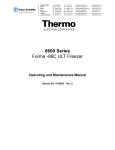
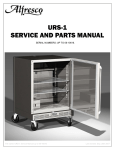
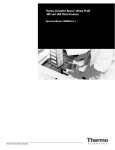
![TSD Series - User Manual [ES]](http://vs1.manualzilla.com/store/data/006244484_1-60182706bc4d83987c147205af2199d9-150x150.png)
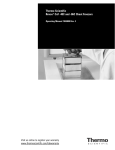
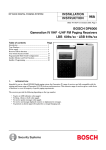

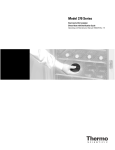
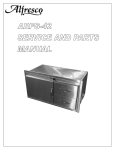
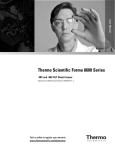
![TSD Series -40C ULT User Manual [EN]](http://vs1.manualzilla.com/store/data/005634658_1-66c9db561a67486106446026c707a26c-150x150.png)
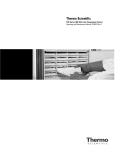
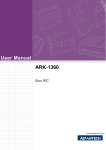
![HFU B-Series -40C ULT User Manual [EN]](http://vs1.manualzilla.com/store/data/005939149_1-8517e65aa5244e7ea01bb15f66a7a44b-150x150.png)
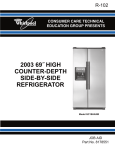
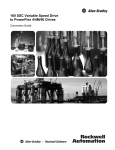
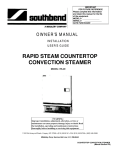
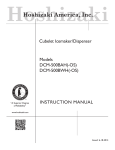
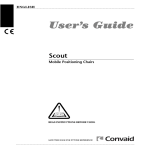
![TSD Series - User Manual [IT]](http://vs1.manualzilla.com/store/data/006100641_1-5eaa3222de544ca7b2bd1a56c36c1ff7-150x150.png)
